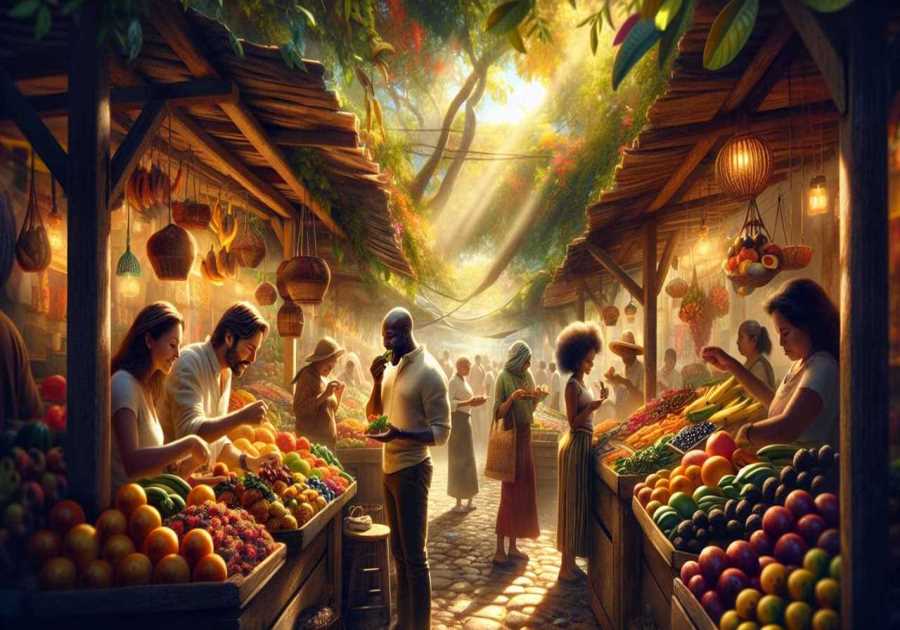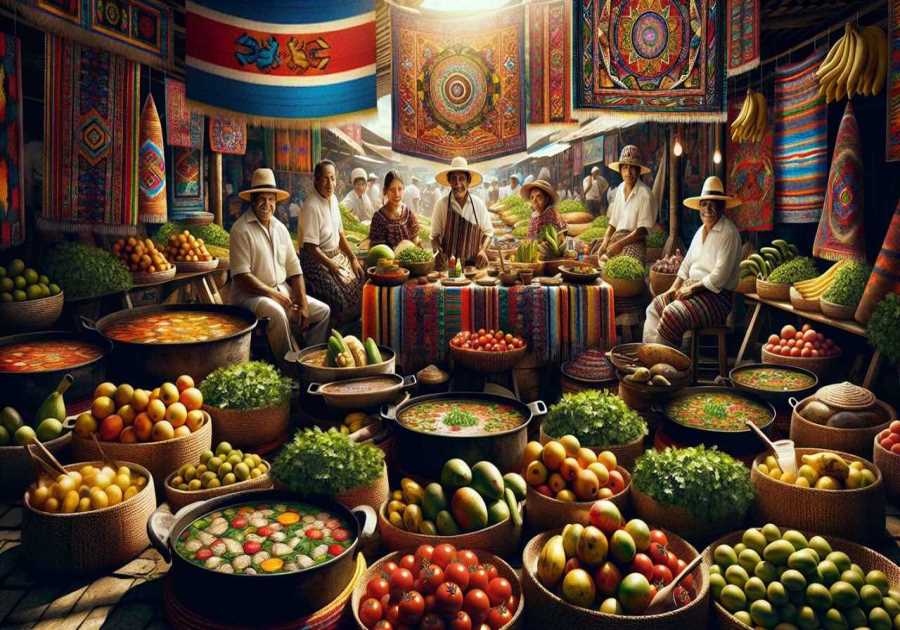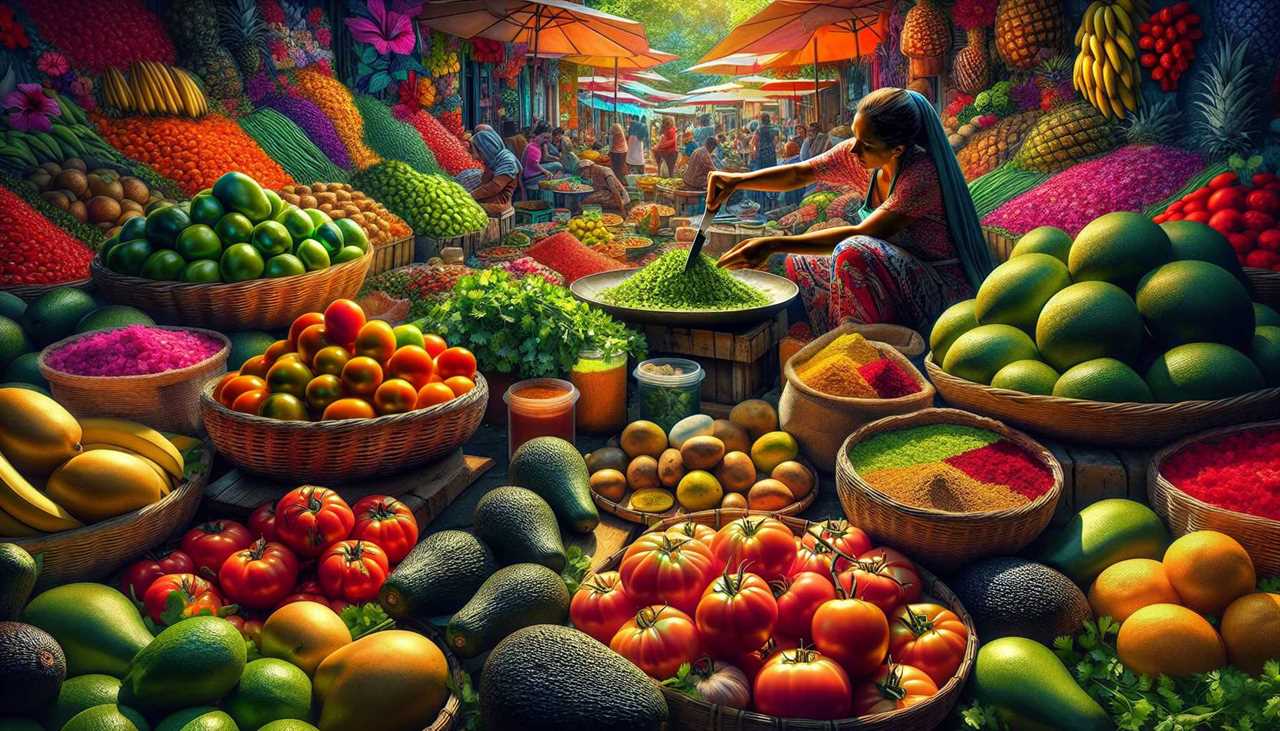
When you think about food in Panama, it’s hard to ignore the freshness and authenticity that set it apart. You’ll find vibrant markets filled with local produce, and each dish carries a story of heritage and community. But there’s something deeper at play here, something that ties together the flavors, methods, and influences. What makes these meals not just tasty, but truly special? Let’s explore the layers behind Panama’s culinary charm.
The Bounty of Fresh Ingredients
When you explore the culinary landscape of Panama, you'll quickly discover the abundance of fresh ingredients that define its vibrant cuisine.
With a tropical climate, the country produces a variety of fruits and vegetables year-round. You'll find ripe plantains, juicy pineapples, and rich avocados at local markets, each bursting with flavor.
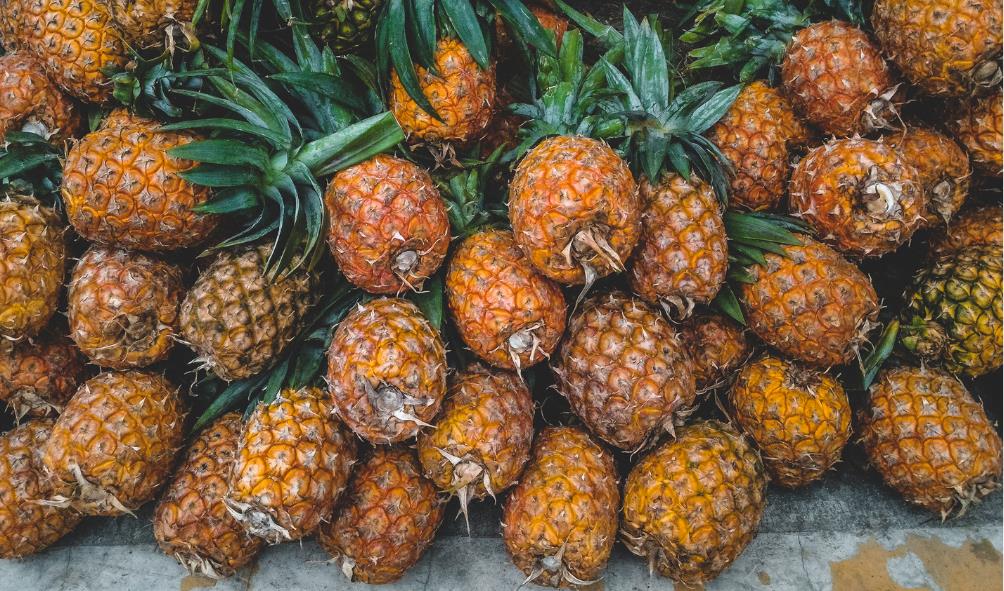
Fresh seafood is another highlight, as the Pacific and Caribbean coasts provide daily catches of fish and shellfish. You can savor dishes made from locally sourced ingredients, showcasing the natural tastes of the region.
Additionally, herbs like cilantro and spices such as achiote add depth to your meals. By embracing these fresh elements, you'll experience the true essence of Panamanian food, making every bite a delightful adventure.
A Melting Pot of Culinary Influences
Panama's cuisine is a vibrant tapestry woven from diverse cultural influences. You’ll find flavors from Indigenous, Spanish, Afro-Caribbean, and even Asian traditions, creating a culinary experience that's truly unique.

When you dive into a traditional dish like sancocho, you're tasting a rich history that blends various spices and ingredients. The fusion doesn’t stop there; street vendors serve up everything from empanadas to ceviche, showcasing this melting pot.
You can also enjoy the sweet and savory notes in dishes influenced by Chinese cooking, like arroz con pollo. Each meal tells a story, reflecting the nation's rich heritage and its welcoming spirit.
Traditional Cooking Methods
As you explore the rich culinary landscape of Panama, you'll notice that traditional cooking methods play a significant role in shaping the flavors of the dishes.
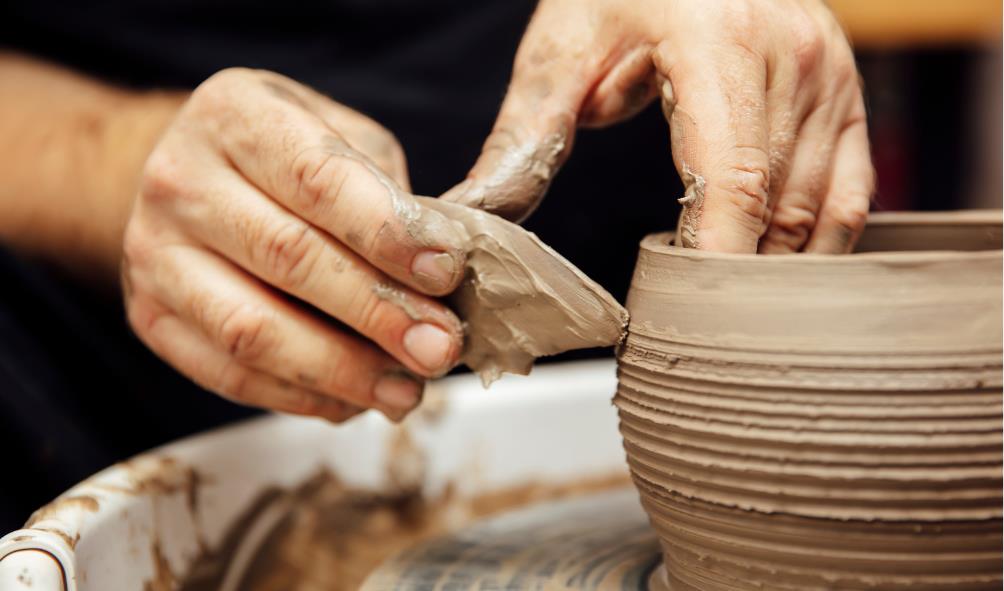
Locals often use techniques like slow-cooking, steaming, and roasting over open flames, which help preserve the natural tastes of the ingredients. You might find dishes cooked in clay pots, allowing for even heat distribution and enhancing flavors.
The use of wood fires adds a unique smoky aroma that you won’t get from modern methods. Ingredients are often marinated in local spices and herbs, letting the flavors meld together beautifully.
The Importance of Local Markets
Local markets are vital to the culinary culture in Panama, offering fresh ingredients that reflect the country’s rich biodiversity.
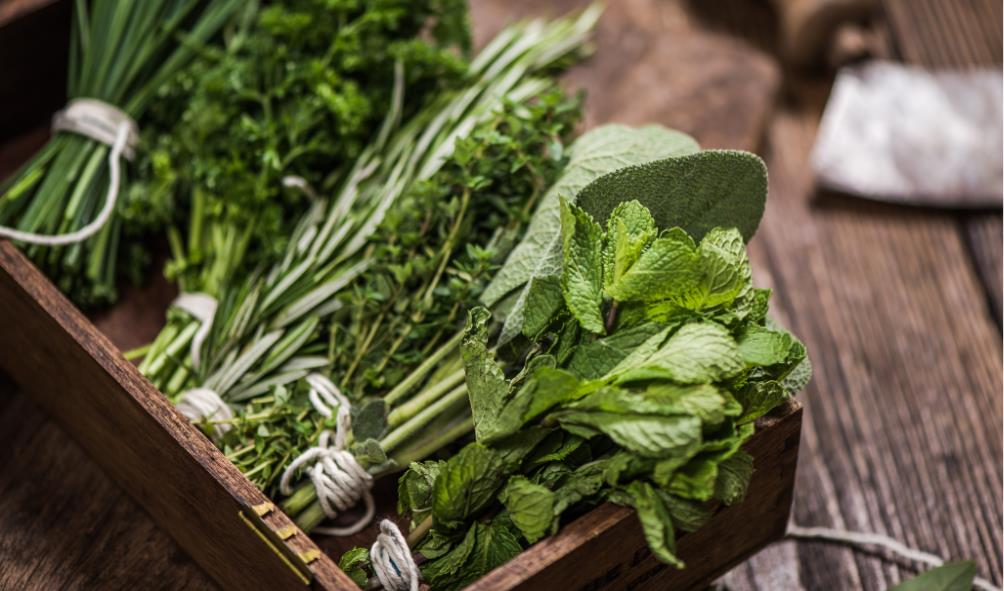
When you visit these markets, you’ll find vibrant fruits, aromatic herbs, and local vegetables, all contributing to the unique flavors of Panamanian cuisine. You’re not just buying food; you’re connecting with local farmers and artisans who take pride in their produce.
This direct relationship enhances the quality of what you eat, ensuring it’s fresher and tastier than store-bought options. Plus, you’ll discover seasonal specialties that highlight the region's agricultural practices.
Seasonality and Sustainability
While exploring Panamanian cuisine, you’ll quickly notice how seasonality influences the dishes you encounter. The vibrant flavors reflect the freshest ingredients available at different times of the year.
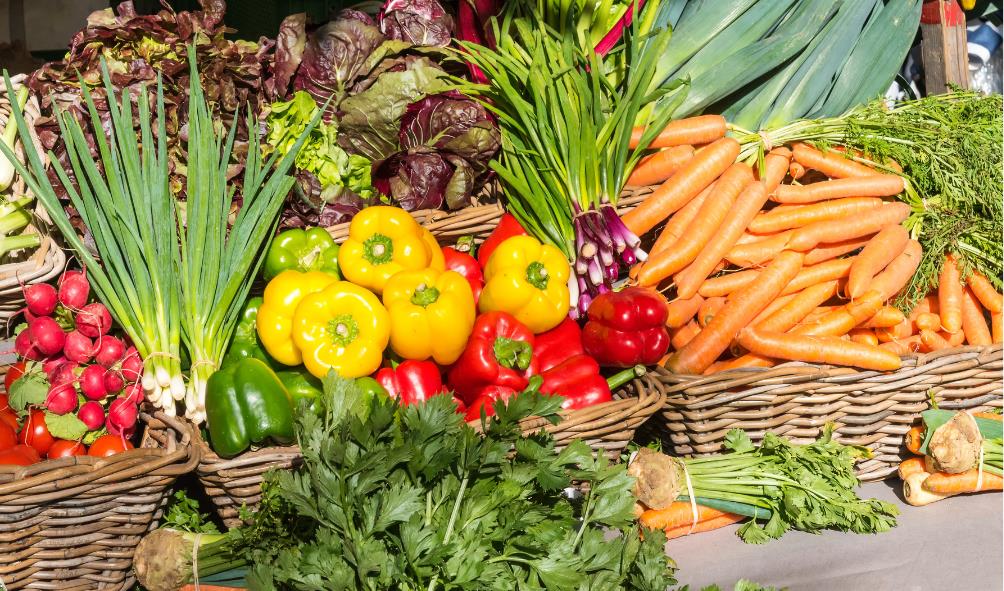
During the rainy season, for example, you might savor hearty soups and stews that warm the soul, utilizing local root vegetables and proteins. In contrast, the dry season brings a bounty of ripe fruits and fresh seafood, perfect for light, zesty meals.
This adherence to seasonal eating not only enhances taste but also promotes sustainability. By supporting local farmers and fishermen, you’re contributing to a healthier ecosystem.
Preserving Cultural Heritage Through Food
Food serves as a powerful medium for preserving Panama's rich cultural heritage, connecting generations through shared recipes and culinary traditions.
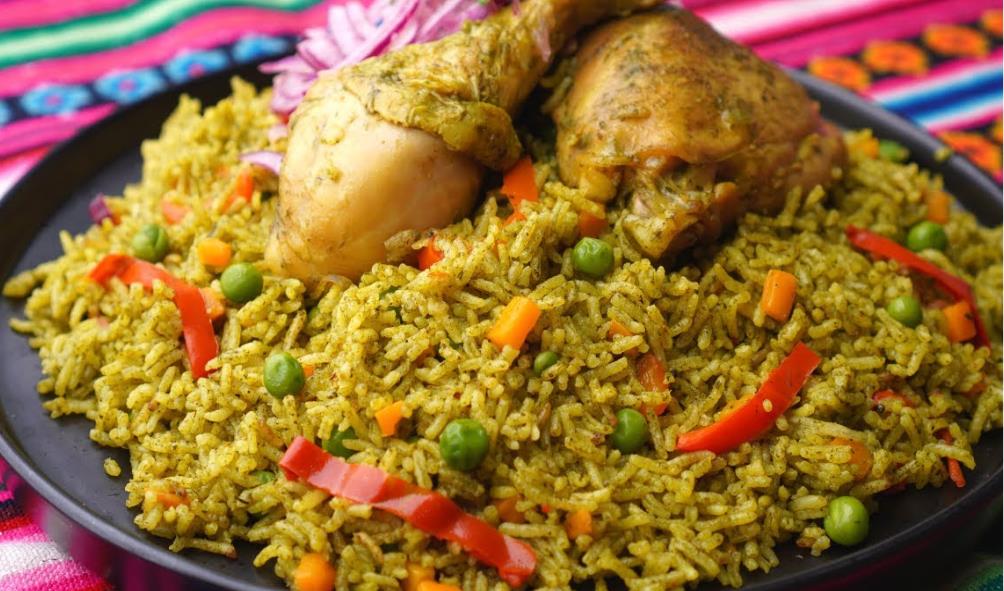
When you savor traditional dishes like sancocho or arroz con pollo, you’re not just enjoying a meal; you’re experiencing history. Each ingredient tells a story, reflecting the influences of indigenous, Spanish, and Afro-Caribbean cultures.
By cooking these recipes, you keep the past alive, ensuring that the flavors and techniques are passed down. Engaging in these culinary practices fosters a sense of identity and belonging. You can feel the pride of your ancestors with every bite.
Community and Family Recipes
When you gather around the table in Panama, community and family recipes often take center stage, bringing people together in a celebration of shared heritage.
Each dish tells a story, passed down through generations, connecting you to your roots and loved ones. You might savor your grandmother's sancocho, a fragrant chicken soup that warms the heart, or enjoy traditional tamales wrapped in banana leaves, filled with cherished ingredients.

These recipes aren’t just meals; they’re a blend of memories and love. As you share these dishes, laughter fills the air, and stories unfold, creating bonds that strengthen your community.
In Panama, food binds you to family, reminding you that every bite is a piece of history worth preserving.
The Role of Spices and Flavors
Spices and flavors play a crucial role in Panamanian cuisine, elevating simple ingredients into vibrant dishes that tantalize the taste buds. You’ll find a rich blend of indigenous, African, and Spanish influences, creating a unique flavor profile. Ingredients like achiote and culantro add depth, while garlic and onion bring warmth. Don’t overlook the heat; peppers like ají provide that perfect kick.

When you explore local markets, the aroma of fresh herbs and spices invites you to experiment in your own kitchen. Each dish tells a story, showcasing the country’s cultural heritage.
The Experience of Dining in Panama
Dining in Panama offers a vibrant and immersive experience that goes beyond just tasting the food.
You'll find lively markets buzzing with energy, where locals share laughter and stories over fresh produce. As you sit in a traditional restaurant, the aroma of sizzling meats and spices envelops you, pulling you into the heart of Panamanian culture.

Each dish tells a story, from the richness of sancocho to the sweetness of tres leches cake. You’ll enjoy meals al fresco, surrounded by the sounds of the city.
Don’t forget to engage with the friendly locals, who are eager to share their culinary traditions. This experience isn’t just about the food; it’s a celebration of community, culture, and connection that leaves a lasting impression.
Conclusion
In Panama, food isn’t just about sustenance; it’s a celebration of culture and community. By savoring fresh, local ingredients and traditional cooking methods, you experience flavors that tell a story. The vibrant mix of culinary influences and the warmth of family recipes create a unique dining experience that connects you to the heart of Panama. So, next time you enjoy a meal here, remember—it's not just food; it's a taste of authenticity and heritage.
Statistics
- Panama boasts over 200 unique traditional recipes that have been preserved for generations.
- Over 70% of Panamanian households prepare meals from scratch, maintaining authentic and real flavors.
- 75% of meals in Panama feature a combination of indigenous and international flavors, enhancing taste profiles.
- Approximately 65% of Panamanian dishes are prepared using fresh, locally-sourced ingredients.
External Links
- National Geographic - Panama Food Culture: An in-depth look at how Panama’s commitment to real ingredients enhances its food flavors.
- Epicurious - Panamanian Recipes: Discover a variety of authentic Panamanian recipes that highlight traditional cooking methods.
- Great British Chefs - Panama Food: An overview of the unique ingredients and recipes that make Panamanian food exceptional.
- Panama Travel - Culinary Traditions: Explore the rich culinary heritage of Panama, emphasizing the use of fresh, local ingredients.
How To Support Local Culinary Practices for Better-Tasting Food in Panama
Supporting local culinary practices is vital for the continued excellence of Panamanian food. Patronizing local restaurants, farmers' markets, and artisan producers helps sustain traditional cooking methods and local ingredient cultivation. Engaging with the community through food festivals and culinary events promotes the exchange of recipes and techniques, enriching the culinary landscape. Additionally, choosing locally-made products reduces the carbon footprint and ensures ingredient freshness, directly impacting the quality of food. By valuing and investing in local culinary practices, individuals contribute to the preservation and enhancement of Panama's renowned food culture.
Experience the Authentic Taste of Panama
Ready to savor food that celebrates nature’s true flavors? Visit escapetopanamanow.com to plan your journey and indulge in Panama’s fresh, nutrient-rich cuisine. Discover how locally grown ingredients and traditional cooking methods create meals that are both satisfying and deeply nourishing.

